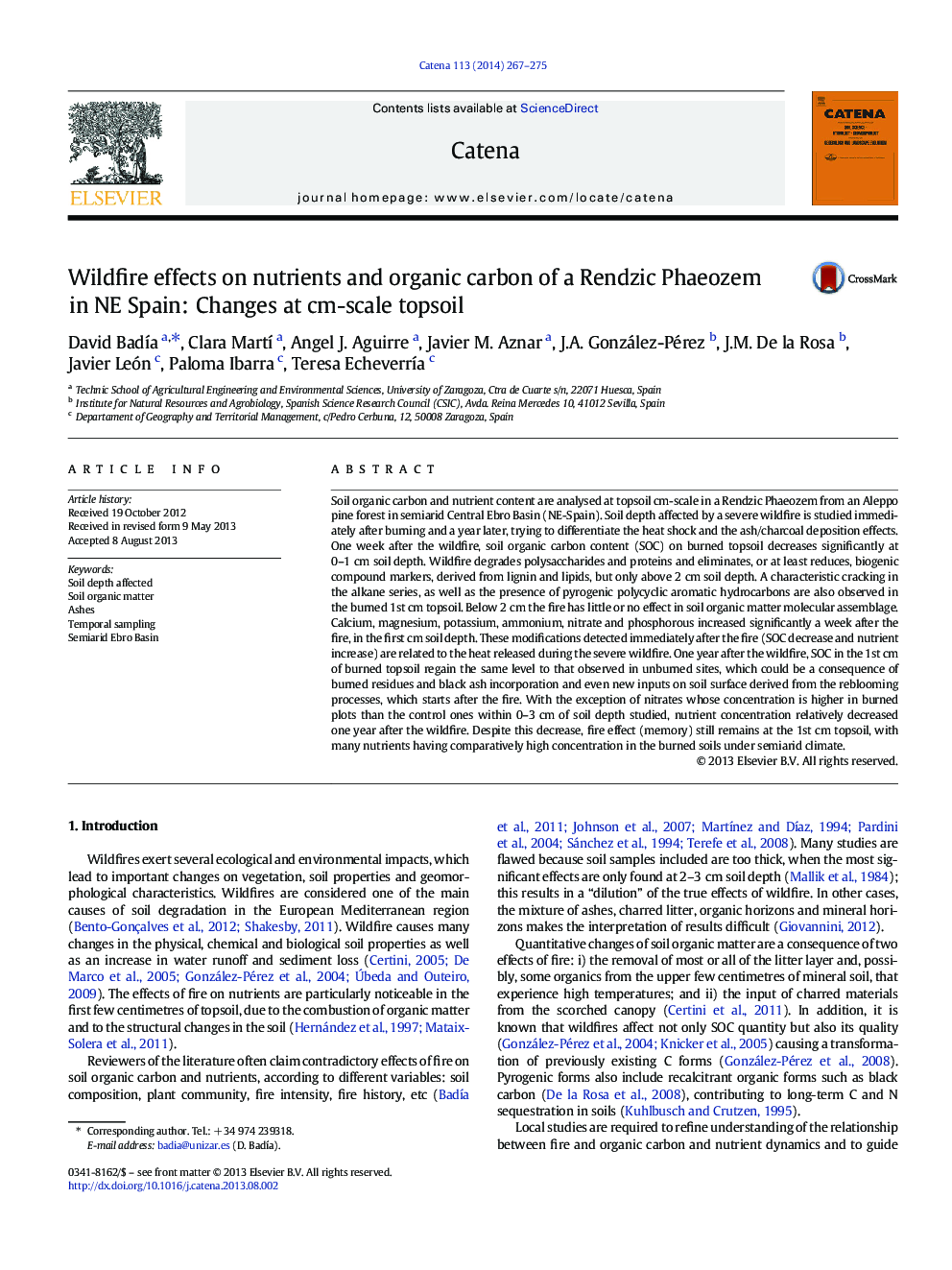| Article ID | Journal | Published Year | Pages | File Type |
|---|---|---|---|---|
| 4571531 | CATENA | 2014 | 9 Pages |
•A decrease in WR, TOC and PyC in the O-horizon.•A decrease in WR and PyC (up to 1 cm of Ah) and SAS (up to 2 cm).•The elimination of almost all pyrosylates in the O-horizon and the 1st cm of Ah.•The fragmentation of alkylic chains (specially alkenes) up to 2 cm soil depth.•No changes are found below 2 cm soil depth of the Ah mollic horizon due to fire.
Soil organic carbon and nutrient content are analysed at topsoil cm-scale in a Rendzic Phaeozem from an Aleppo pine forest in semiarid Central Ebro Basin (NE-Spain). Soil depth affected by a severe wildfire is studied immediately after burning and a year later, trying to differentiate the heat shock and the ash/charcoal deposition effects. One week after the wildfire, soil organic carbon content (SOC) on burned topsoil decreases significantly at 0–1 cm soil depth. Wildfire degrades polysaccharides and proteins and eliminates, or at least reduces, biogenic compound markers, derived from lignin and lipids, but only above 2 cm soil depth. A characteristic cracking in the alkane series, as well as the presence of pyrogenic polycyclic aromatic hydrocarbons are also observed in the burned 1st cm topsoil. Below 2 cm the fire has little or no effect in soil organic matter molecular assemblage. Calcium, magnesium, potassium, ammonium, nitrate and phosphorous increased significantly a week after the fire, in the first cm soil depth. These modifications detected immediately after the fire (SOC decrease and nutrient increase) are related to the heat released during the severe wildfire. One year after the wildfire, SOC in the 1st cm of burned topsoil regain the same level to that observed in unburned sites, which could be a consequence of burned residues and black ash incorporation and even new inputs on soil surface derived from the reblooming processes, which starts after the fire. With the exception of nitrates whose concentration is higher in burned plots than the control ones within 0–3 cm of soil depth studied, nutrient concentration relatively decreased one year after the wildfire. Despite this decrease, fire effect (memory) still remains at the 1st cm topsoil, with many nutrients having comparatively high concentration in the burned soils under semiarid climate.
Graphical abstractFigure optionsDownload full-size imageDownload as PowerPoint slide
